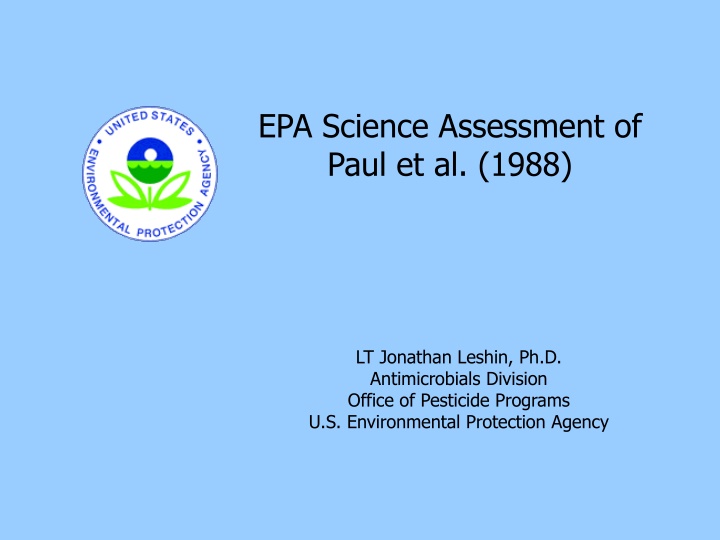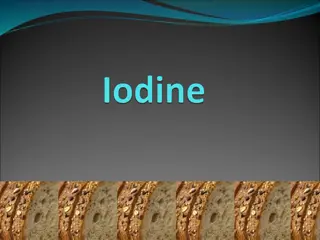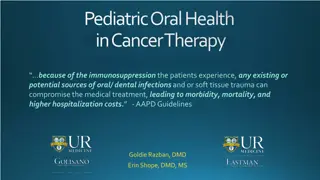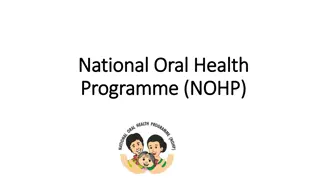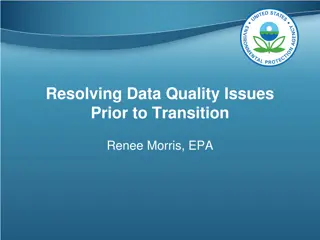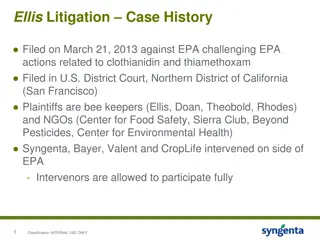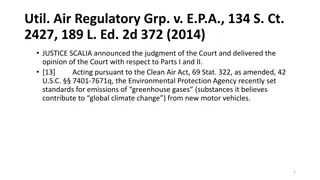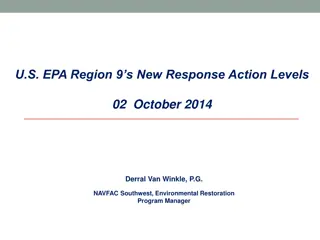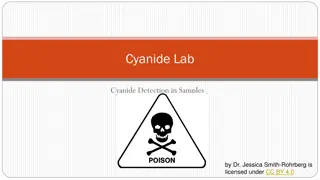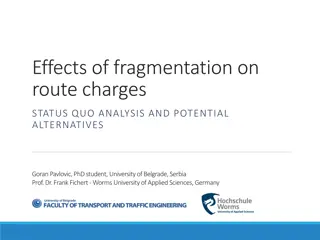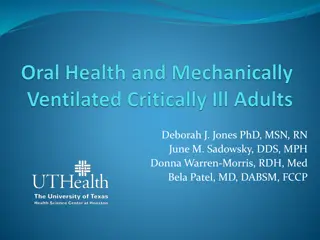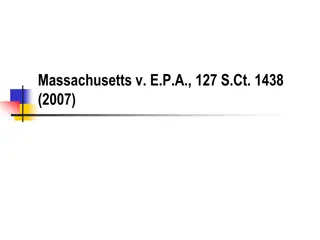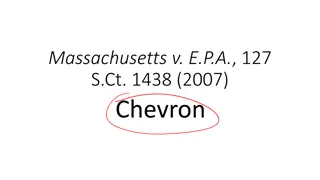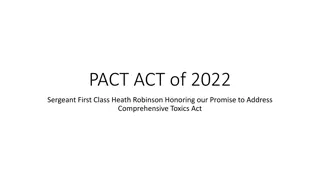EPA Assessment of Iodine Exposure Risks via Oral Route
The U.S. Environmental Protection Agency is conducting a quantitative assessment on the risks associated with iodine exposure through the oral route. This assessment involves determining toxic effects and the point of departure for iodine exposure. Various studies, such as those by Paul et al. (1988) and Gardner et al. (1988), are being considered to establish toxicity levels and a No Observed Adverse Effect Level (NOAEL) for iodine exposure. The National Academy of Sciences (NAS) report from 2000 examined papers on nutritional dietary reference intakes for iodine. Existing iodine background exposure levels, recommended dietary allowances (RDAs), and tolerable upper intake levels set by the NAS are discussed. The scientific validity and ethical acceptability of the cited studies in assessing systemic iodine toxicity are questioned. Additionally, a study conducted at the University of Massachusetts Medical School aimed to determine a tolerable upper limit for iodine consumption through subject evaluations.
Uploaded on Feb 25, 2025 | 3 Views
Download Presentation

Please find below an Image/Link to download the presentation.
The content on the website is provided AS IS for your information and personal use only. It may not be sold, licensed, or shared on other websites without obtaining consent from the author.If you encounter any issues during the download, it is possible that the publisher has removed the file from their server.
You are allowed to download the files provided on this website for personal or commercial use, subject to the condition that they are used lawfully. All files are the property of their respective owners.
The content on the website is provided AS IS for your information and personal use only. It may not be sold, licensed, or shared on other websites without obtaining consent from the author.
E N D
Presentation Transcript
EPA Science Assessment of Paul et al. (1988) LT Jonathan Leshin, Ph.D. Antimicrobials Division Office of Pesticide Programs U.S. Environmental Protection Agency 1 1
Introduction The Agency is conducting a quantitative assessment of the risks of iodine exposure via the oral route These assessments require the determination of a toxic effects and point of departure (POD) of iodine exposure. There are a number of studies conducted on the safety of iodine exposure via the oral route in humans, due to its ubiquitous nature and medical relevance 2
Introduction - 2 The Agency is proposing the use of the following studies in a weight of evidence manner to quantitatively determine the toxicity and NOAEL for iodine exposure Paul et al, 1988 Gardner et al, 1988 LeMar et al, 1995 As these are open literature studies, there is no raw data available for analysis These studies represent a subset of the studies used by the NAS in assessing iodine for nutritional purposes 3
NAS Report (2000) Examined ~100 papers in a report on nutritional dietary reference intakes Table : Existing Iodine Background Exposure Levels Exposure Scenario Exposure Level RDA set by the NAS for adult men and women. 150 g/day or 0.0021 mg/kg/day Tolerable Upper Intake Level set by the NAS for adult men and women 1100 g/day or 0.016 mg/kg/day. U.S. Estimated dietary adult intake established by the U.S. Department of Agriculture Continuing Survey of Food Intakes by Individuals (1994-1996) 190 to 210 g/day for women 240 to 300 g/day for men 4
NAS Report (2000) The National Academy of Sciences report cited Paul et al (1988) and Gardner et al (1988) as the standard for establishing a tolerable upper limit LeMar et al (1995) chosen to show range of safety after high dose exposure Are these studies scientifically valid and ethically acceptable for use in risk assessment for systemic iodine toxicity? 5
Study Information Conducted at the University of Massachusetts Medical School Study Objective Determine a tolerable upper limit for iodine consumption Subjects 9 Males and 23 Females, euthyroid, no history of thyroid disease or use of medications known to affect thyroid function or previous reactions to iodine, age 23-56, not pregnant (if Female), no antithyroid antibodies detected An additional 5 age-matched males were studied but not given iodine supplements as controls 6
Test Substance Sodium Iodide dissolved in water (250, 500 or 1500 g/ml per day), co-administered with 5 mg/ml of ascorbic acid. This was administered as two 0.5 ml solutions for 14 days. Men received 1500 g per day and women received either 250, 500 or 1500 g per day (total) Some women were studied at two dose levels (14 day dosing schedule) at least one year apart. Subjects maintained their normal diets. Some diets may be higher in iodine than others but assumed average was 300 g/day 7
Study Method All subjects had initial evaluations for the study. On day 0, baseline levels of thyroxine (T4), triiodothyronine (T3) and thyroid stimulating hormone (TSH) as well resin T3 uptake and free T4 index (FT4I) were measured. Stimulated TSH was measured after stimulation by thyrotropin releasing hormone (TRH) every 15 minutes for an hour. On day 15, the initial protocol was repeated. 8
Endpoints Serum T4 Serum T3 Resin T3 uptake Free T4 index TSH Stimulated TSH 9
Results - 1 Table 1 Serum thyroid hormone concentrations before and after iodide administration Student s paired t-test Mean SEM *, p<0.02 **, p<0.01 ***, p<0.001 NS not significant Serum T4 ( g/dl) Serum T3 (ng/dl) Serum TSH ( U/ml) Serum FT4I Iodide dose n Day 0 Day 15 Day 0 Day 15 Day 0 Day 15 Day 0 Day 15 7.3 0.2 6.7 0.2*** 7.0 0.2 6.4 0.2*** 181 4 173 4* 1.9 0.2 2.8 0.4** 1500 g 18 Comparison is day 0 to day 15 7.8 0.4 7.9 0.6 7.1 0.3 7.1 0.3 148 5 144 4 2.1 0.3 2.4 0.4 500 g 9 7.9 04 7.5 0.3 7.6 0.3 6.9 0.2 134 3 135 4 2.3 0.4 2.7 0.5 250 g 9 10
Results - 2 Figure 1: The effect of iodine administration of the maximum increase in serum TSH concentration following the intravenous administration of 1500 g TRH. The numbers in parenthesis represent the number of subjects in each group. Statistical significance was determined using a Student s paired t-test 11
Results - 3 Table 2: Effect of 500 or 250 g iodine administered daily to euthyroid women on the TSH response to TRH Student s paired t-test Mean SEM Comparison is day 0 to day 15 Delta Max Serum TSH ( U/ml) Integrated Serum TSH response ( U/ml x min) Iodide dose n Day 0 Day 15 Day 0 Day 15 18.4 2.8 20.7 2.8 975 151 1088 159 500 g 9 19.1 3.9 21.6 5.8 1008 196 1170 298 250 g 9 12
Conclusions No change in weight, symptoms of thyroid dysfunction or other adverse affects reported At 1500 g/day there were small but statistically significant decreases in T4 and T3 At 1500 g/day there were compensatory and statistically significant increases in serum TSH and TRH induced TSH These biological changes, while statistically significant, remained within the normal range and were not considered adverse No effects were seen at 250 or 500 g/day 13
EPA Ethics Assessment of Paul et al. (1988) Kelly Sherman Office of Pesticide Programs U.S. Environmental Protection Agency 14 14
Introduction Research was conducted in the 1980s, before promulgation of the 2006 Human Studies Rule Considered an intentional exposure human toxicity study because it evaluated potential the toxic effects of iodine intake on thyroid function 40 CFR 26.1602 requires HSRB review for pre-rule intentional exposure toxicity studies upon which EPA intended to rely Study was located by EPA, not submitted to the Agency, so 40 CFR 26.1303 does not apply 15 15
Value to Society Provides data about whether small increases in iodine intake affect thyroid function The research was important because at the time of the study, dietary changes were resulting in increased iodine intake The data are potentially useful in EPA s human health risk assessments for products containing iodine 16 16
Subject Selection 32 subjects (9 males, 23 females); ages 23-56 None of the female subjects were pregnant or nursing; pregnancy testing performed No information about the population from which subjects were recruited Inclusion/exclusion criteria: Subjects had to be healthy, euthyroid, not on any medications that affect thyroid function, no history of thyroid disease Not pregnant 17 17
Risks and Risk Minimization Article is silent about risks and risk minimization Dr. Braverman stated: Subjects were told about possible risks associated with ingesting too much or too little iodine Investigators believed that risk minimization measures related to iodine doses were not necessary because doses were low Investigators followed normal medical safety precautions for blood draws and i.v. s 18 18
Benefits & Risk:Benefit Balance Benefits No benefits to subjects Societal benefit from knowledge about iodine intake Risk:Benefit Balance Not discussed in article Risks were minimal, so the potential benefits to society outweigh the risks 19
Ethics Oversight Article is silent Dr. Braverman did not recall if the research underwent independent ethics oversight 20 20
Informed Consent Subjects are referred to as volunteers in article Dr. Braverman stated: Subjects provided written informed consent Study procedures were explained to the subjects, and they were told of possible effects of iodine ingestion Copy of the consent form not available 21
Respect for Subjects Subjects were offered freedom to withdraw at any time Subjects were not paid for participation Subjects privacy protected 22
Standards for Documentation The requirement at 40 CFR 26.1303 to document the ethical conduct of research submitted to EPA does not apply: Study was obtained from the public literature, not submitted to EPA EPA located the study at its own initiative 23 23
Standards of Conduct Conducted prior to 1988, before EPA s Rule at 40 CFR part 26 took effect FIFRA 12(a)(2)(P) does not apply Did not involve use of a pesticide 1974 DHEW Regulations IRB review and approval Written, fully informed, voluntary consent Declaration of Helsinki (1983) 24
Standards for EPA Reliance 40 CFR 26.1703 Prohibits EPA reliance on data involving intentional exposure of pregnant or nursing women or of children 40 CFR 26.1704 Prohibits EPA reliance on data if there is clear and convincing evidence that: (1) Conduct of the research was fundamentally unethical; or (2) Conduct of research was deficient relative to the ethical standards prevailing at the time the research was conducted in a way that placed participants at increased risk of harm or impaired their informed consent. 25
Compliance with Standards for EPA Reliance 40 CFR 26.1703 All subjects were above the age of 18 The female subjects were not pregnant or nursing 40 CFR 26.1704 No clear and convincing evidence that the conduct of the research was fundamentally unethical No clear and convincing evidence that the conduct of the research was deficient relative to prevailing ethical standards 26 26
Conclusion If it is deemed scientifically valid and relevant, there are no barriers in FIFRA or in 40 CFR 26.1703 or 26.1704 to EPA s reliance on the Paul et al. (1988) study in actions taken under FIFRA or 408 of FFDCA 27 27
Charge Questions 1. Is the Paul et al. (1988) study scientifically sound, providing reliable data? 2. If so, is this study relevant for quantitative use in support of an assessment of the oral risk of exposure to iodine? 3. Does the study meet the applicable requirements of 40 CFR part 26 subpart Q? 28
